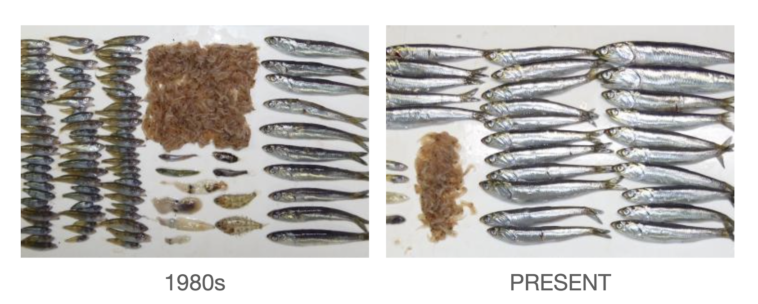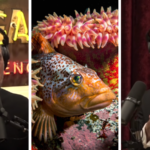The diet of wild salmon has drastically changed in our lifetimes. And two photos shared by a U.S. agency show just how stark the changes have been.
“The average diet of salmon off California in the 1980s was diverse, including anchovy, sardine, krill, and other organisms,” explains a post shared by the National Oceanic and Atmospheric Administration, or NOAA for short.
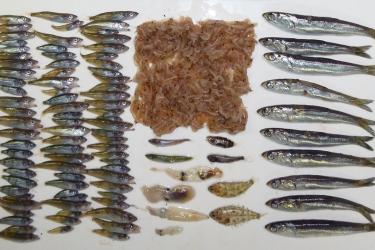
Photo credit: John Field / Source: NOAA Fisheries.
“In recent years anchovy have dominated salmon diets, with fishermen finding salmon stomachs almost entirely full of anchovy,” it notes.
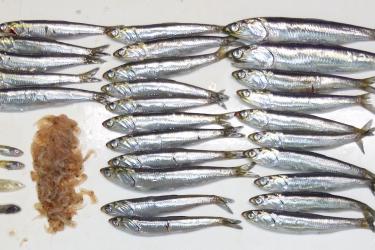
Photo credit: John Field / Source: NOAA Fisheries.
These photos refer specifically to California salmon. But the factors that have radically reshaped their food supply–heat waves, drought, damning of rivers and other ecosystem disturbances–are also at play up and down the B.C. coast.
NOAA fisheries expert Nate Mantua said increasingly unpredictable conditions linked to climate change are resulting in “chronically low numbers of chum and Chinook salmon” on Alaska’s large salmon rivers.
“These rivers traditionally supported subsistence and commercial fisheries that provide reliable and nutritious sources of food, critical to rural Alaskan culture,” he says.
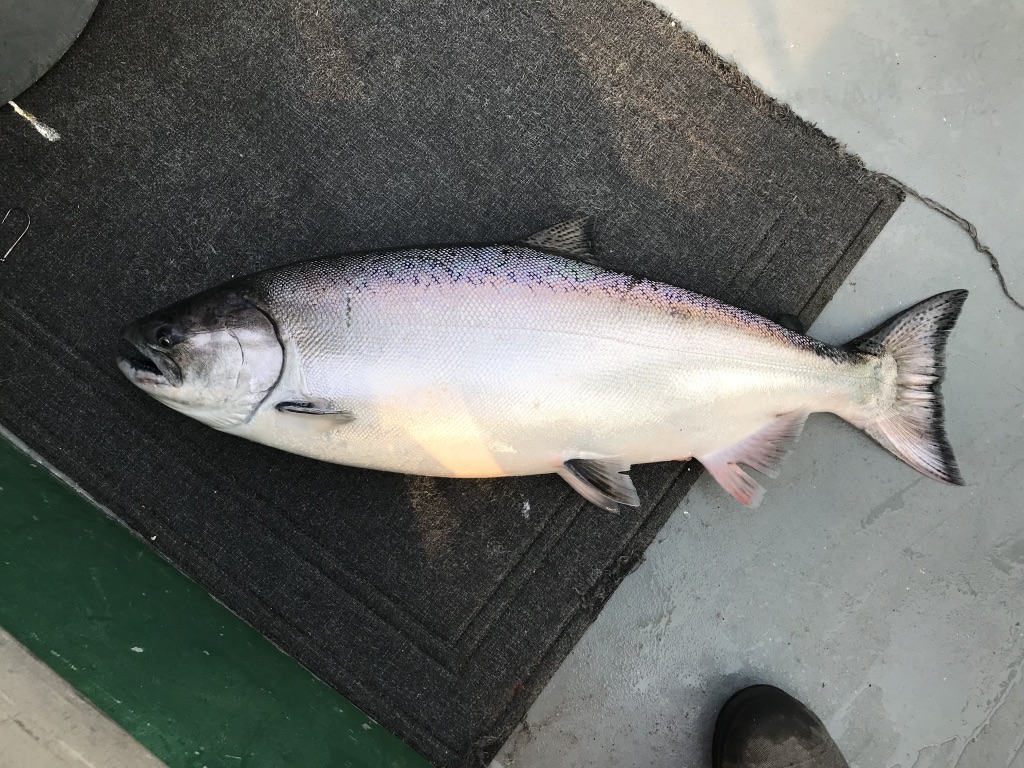
Photo credit: Nate Mantua. Source: NOAA Fisheries
In California, warmer temperatures have resulted in an abundance of anchovies, hence the changing diet for salmon there. It’s not all bad news. “They love anchovies, they grow really well on it,” Mantua explains. “The salmon out in the ocean that I saw last year looked fat and healthy.”
But he also has concerns: “It has created some new conditions for our salmon that we need to address and better understand. Thiamine deficiency is a new threat that was documented for the first time in 2020 in Central Valley Chinook salmon.”
One thing’s for sure: we are in an “era of surprises” when it comes to salmon.


